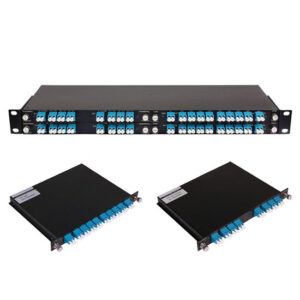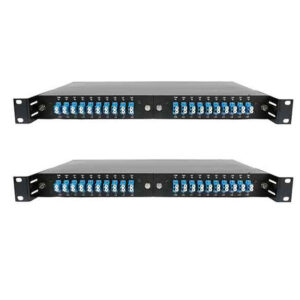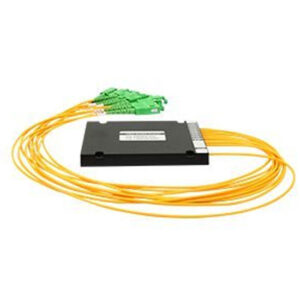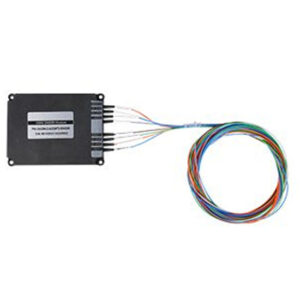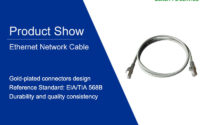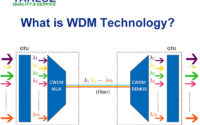Guidelines for Selecting CWDM and DWDM Hybrid Systems
In today’s bandwidth-hungry world, combining Coarse Wavelength Division Multiplexing (CWDM) and Dense Wavelength Division Multiplexing (DWDM) into a hybrid system offers a flexible and cost-effective way to maximize fiber optic network capacity. However, selecting the right hybrid solution requires careful planning. Here’s a concise guide to help you make informed decisions.
Understand Your Network Requirements
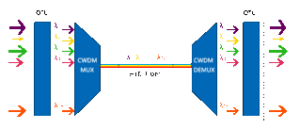
Capacity Needs:
CWDM supports up to 18 channels with 20nm spacing, ideal for short-distance, low-cost applications.
DWDM offers 40+ channels with 0.8nm spacing, suited for long-haul, high-capacity demands.
Hybrid systems blend both: Use CWDM for cost efficiency in metro networks and DWDM for backbone expansion.
Distance:
CWDM: Best for distances under 80 km (due to limited amplification).
DWDM: Supports thousands of kilometers with Erbium-Doped Fiber Amplifiers (EDFAs).
Hybrid Tip: Deploy DWDM for long spans and CWDM for local connections.
Evaluate Cost vs. Scalability
Initial Costs:
CWDM uses cheaper, uncooled lasers, reducing upfront expenses.
DWDM requires pricier temperature-controlled components.
Hybrid Advantage: Start with CWDM for immediate needs and integrate DWDM modules as demand grows.
Future-Proofing:
Ensure the system supports modular upgrades (e.g., adding DWDM channels later).
Check Component Compatibility
Transceivers:
Verify compatibility between CWDM SFP+ (e.g., 1270–1610nm) and DWDM optics (C-band: 1525–1565nm).
Filters and Mux/Demux:
Use hybrid multiplexers that combine CWDM and DWDM wavelengths without interference.
Consider Power Budget and Signal Loss
Insertion Loss:
Hybrid systems add complexity; ensure mux/demux and splice points stay within acceptable loss limits.
Amplification:
For long-distance DWDM links, plan for EDFAs or Raman amplifiers.
Prioritize Network Management
Monitoring:
Opt for systems with integrated OTDR or OSA capabilities to track performance.
Software:
Choose solutions with centralized management for easy wavelength provisioning and fault detection.
Why Go Hybrid?
Flexibility: Balance cost and capacity across diverse network segments.
Scalability: Grow bandwidth without overhauling infrastructure.
Efficiency: Maximize fiber utilization for 5G, cloud, and IoT-ready networks.
TARLUZ’S RELATED PRODUCTS
Rack Chassis type
CWDM Mux/Demux Rack Chassis (4, 8, 16, 18-Channel)
DWDM Module 100G/200G Rack Chassis (4, 8-Channel)
Module type
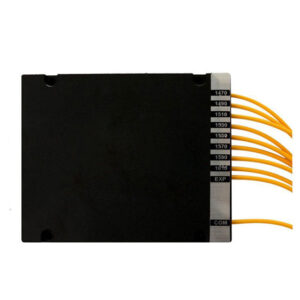
CWDM Mux/Demux (Module Type) (4, 8, 16, 18-Channel)
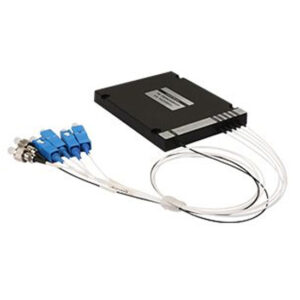
Module Type CWDM OADM (4, 8, 16-Channel)
DWDM Module 100G/200G Module type (4, 8, 16-Channel)
DWDM OADM Module 100/200G Module type (4, 8-Channel)
In Conclusion
Selecting the right hybrid system depends on your network’s specific needs, including distance, capacity, cost, and future scalability. A CWDM/DWDM hybrid system can offer the flexibility to optimize both short and long-range data transmission, providing a cost-effective solution for a growing network infrastructure.
Whether you’re enhancing an existing network or planning a new one, taking the time to analyze your requirements and understand the differences between CWDM and DWDM will ensure you make an informed decision.By aligning your hybrid CWDM/DWDM system with these guidelines, you can future-proof your network while optimizing costs.
For deeper insights, explore solutions from trusted providers like TARLUZ.
Related article
Basic Knowledge of DWDM(Dense Wavelength Division Multiplexing)
#CWDM #DWDM #FiberOptics #Networking #Telecom #HybridSystems
